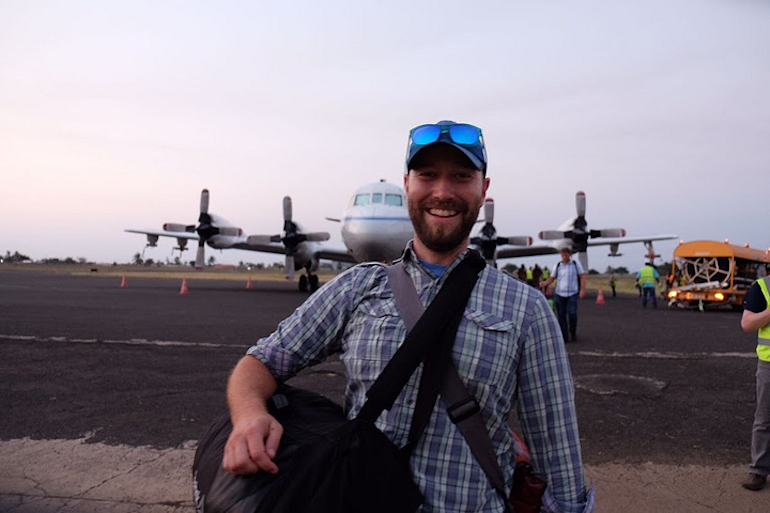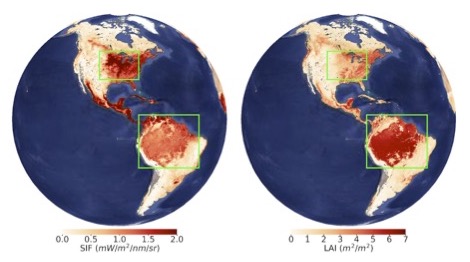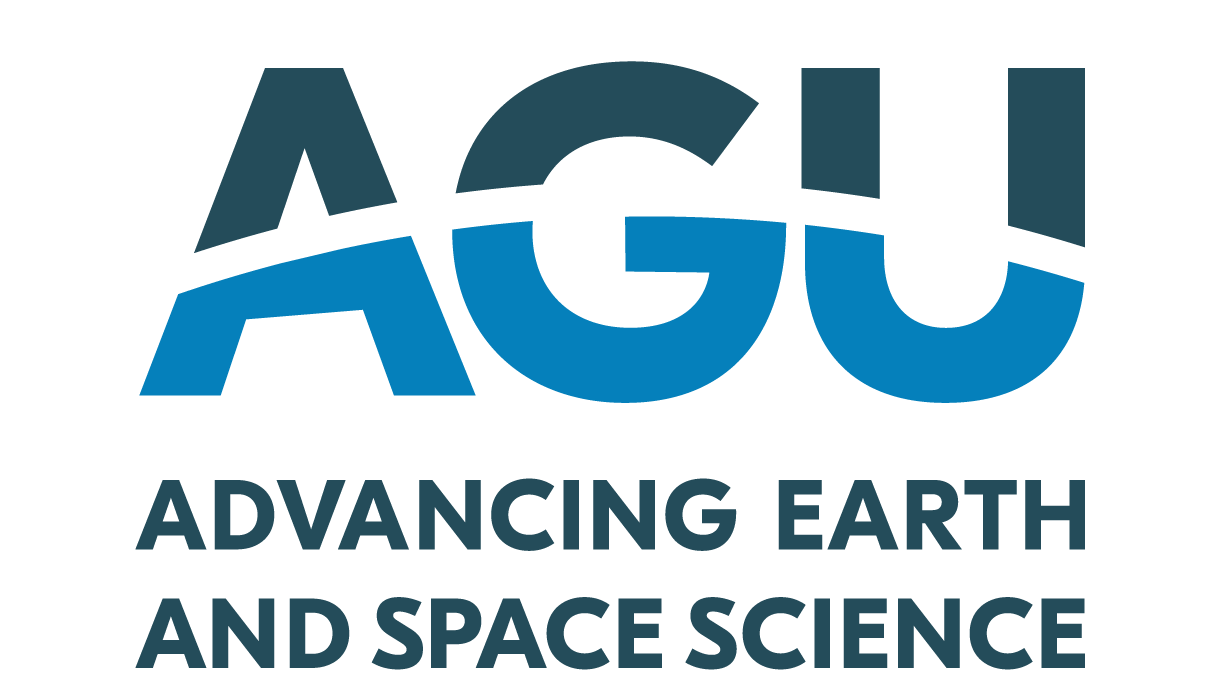For decades, scientists have used satellite data to assess the health and greenness of Earth’s…
Climate scientist Samuel LeBlanc is working to reduce one of the biggest uncertainties in measuring our atmosphere
As complex as they are, climate models do an impressively good job at modeling the Earth’s past, present, and future climate. The first climate model was developed over 50 years ago. Since then, modeling accuracy has significantly improved, thanks to the work of scientists across the globe. These climate scientists bring a deep passion to the work of understanding the intricacies of all Earth’s systems, as well as forecast models.

Samuel LeBlanc, NASA P3-D in the back, arriving at São Tomé for the start of ORACLES 2017 after an 8 day cross-Atlantic trip; Image: Samual LeBlanc
One of those scientists is Samuel LeBlanc, a Bay Area Environmental Research Institute researcher who studies the remote sensing of aerosols and clouds.
Aerosols are particulates that are suspended in the air. “We’re looking at atmospheric particulates . . . anything like viruses or dust or smoke . . . It’s a very wide range, but they’re all about the same size, about one micron . . . The smaller ones have more impact [on] health, and the larger ones . . . have more impact [on] sky color or climate,” says LeBlanc.
According to a recent working group report from The Intergovernmental Panel on Climate Change, “Clouds and aerosols continue to contribute the largest uncertainty to estimates and interpretations of the Earth’s changing energy budget.” Earth’s energy budget is the net flow of energy into and out of the Earth system. The Earth receives energy from the Sun — some of that energy is absorbed, and some is radiated back out into space. When incoming and outgoing energy is balanced, global temperatures stay relatively stable. And when it falls out of balance, global temperatures rise or fall in response.
“It’s a hard question . . . it’s very complex,” says LeBlanc. Aerosols can both “shade the earth and make [it] cooler, but also warm the atmosphere by absorbing light . . . We need to better understand the actual properties of the aerosols.”
The problem is a good fit for LeBlanc — he came to climate science precisely because it was something he didn’t understand. He began college as an engineer but soon switched to physics because “I wanted to understand the equations that we use. . . . I wanted to understand a little bit more of the why. I was never quite satisfied. I decided to go into atmospheric science in grad school . . . because I didn’t know it,” says LeBlanc.
“My graduate advisor, who was actually at NASA Ames . . . guided me very well,” says LeBlanc. “I remember at one point I was . . . trying to understand the influence of aerosol on spectral measurements. And I’m like, ‘It’s really hard because clouds are always in the way!’ And he’s like, ‘Well, instead of it being a problem, why don’t you study them?’ I’m like: Oh. Yeah. That’s a good idea.”
Cloud research has been central to LeBlanc’s research ever since. “My piece of [the] problem . . . is all about better measurements, doing these field campaigns, going to where the aerosols are very consistent or where we know the least about the impact of the aerosol and saying: Actually, this is the amount of aerosol that we have, and this is the proportion of absorption that they do.”

AATS-14, 4STAR, and 4STARB (left to right) sun photometers at sunrise during a calibration campaign at Mauna Loa Observatory, Hawaii, February 2018; Image: Samuel LeBlanc
Getting better measurements relies on building more accurate instruments. Much of LeBlanc’s work centers around developing, testing, and refining new instruments for use on aircrafts.
One major instrument he works with is an airborne sun photometer. “It looks like a little R2-D2. . . . It’s a black ball that goes on top of an aircraft and looks directly at the sun and measures everything between the sun and it — all the particulates, all the clouds, it can quantify how much light is lost due to those,” says LeBlanc.

4STAR integrated on top of the Canada National Research Council Convair 580, in preparation for the Canadian Oil Sands Region Experiment, May 2018; Image: Samuel LeBlanc
Field campaigns have taken LeBlanc and the specialized instruments he relies on to all parts of the globe — from São Tomé Island in the Gulf of Guinea, to South Korea, Canada, and Hawaii.
Current Covid restrictions mean that all of LeBlanc’s field campaigns are on hold. He’s using the time to dig into data analysis from his home in Santa Cruz, California. That, and tinker with a few side projects.
With the extra time to think, LeBlanc can’t help but dive into trying to answer more questions, like: How has the Covid shutdown changed pollution patterns in the Bay Area? What are the shapes and properties of the particles that caused those red wildfire skies? How do aerosols impact weather models (which are not the same thing as climate models), and how can we improve weather forecasts when there’s a lot of smoke in the air?
Chasing the unknown is, at its core, what science is all about. “What is science? I think the broadest term would be: Science is a method to acquire knowledge, that tries to be as objective as possible,” says LeBlanc.
Objective, yes — but also with a sense of humor:

AATS-14 and 4STAR dressing up during a cloudy day at Mauna Loa Observatory, Hawaii; Image: Samuel LeBlanc


